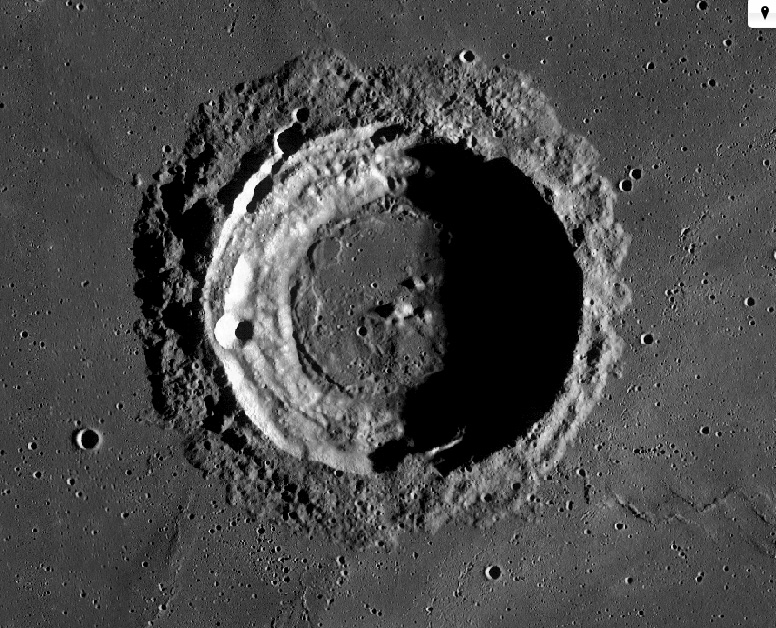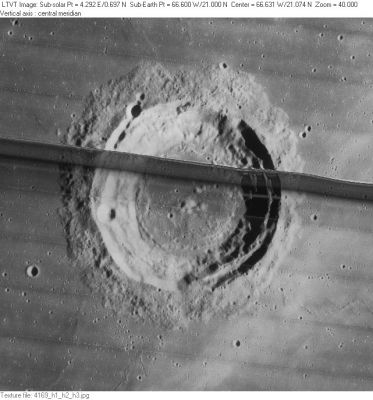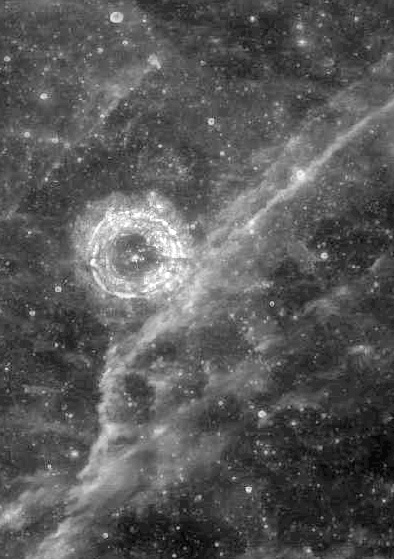Seleucus
Contents
Seleucus
|
Lat: 21.0°N, Long: 66.6°W, Diam: 43 km, Depth: 2.87 km, Rükl: 17 |
LO-IV-169H

LRO - low-Sun view
Images
LPOD Photo Gallery Lunar Orbiter Images Apollo Images
Apollo 15's orbital color Hasselblad photographs of the sunrise terminator at Seleucus
AS15-88-12003 In this frame, Seleucus was captured near the upper right corner. The distinct crater a little above and to the left of centre is Schiaparelli. The system of wrinkle ridges at the image's lower half are Dorsa Burnet. Looking south.
AS15-93-12633 Seleucus and Schiaparelli.
AS15-93-12634 Seleucus (central).
AS15-93-12635 Seleucus (central).
Apollo 15's B&W Hasselblad photographs of Seleucus
AS15-98-13362 (close up of Seleucus's sunlit eastern outer slopes).
AS15-98-13363 (close up of Seleucus's sunlit eastern outer slopes).
Research: Danny Caes
One of Apollo 15's oblique southward looking photographs of the moon's morning terminator running over Seleucus. Photograph made by Apollo 15's Fairchild-Mapping/Metric camera:
AS15-M-2620 (LPI-scan).
AS15-M-2620 (ASU-scan).
Maps
(LAC zone 38D1) LAC map Geologic map LM map
Description
Description: Elger
(IAU Directions) SELEUCUS.--A considerable ring-plain, 32 miles in diameter, with lofty terraced walls, rising 10,000 feet above a dark floor which includes an inconspicuous central hill. This formation stands on a ridge extending from near Briggs to the E. side of Cardanus.
Description: Wikipedia
Additional Information
- Depth data from Kurt Fisher database
Westfall, 2000: 2.87 km
Viscardy, 1985: 2.29 km
Cherrington, 1969: 2.28 km
LRO altimetry: about 2.6 km (Chuck Wood) - Central peak height about 260 m, average above uneven elevation floor. (Chuck Wood)
- Included in ALPO list of bright ray craters, but not a normal ray crater; only ray is tangential Seleucus Ray which may not originate at that crater. CAW
- There's some sort of "wrinkle ridge ghost crater" in the officially unnamed wrinkle ridge southeast of Seleucus. The pinpoint coordinates of this rare sort of ghost crater are: 17° North / 63°30' West (discovered on the "Big Shadows" version of the WAC in the LROC Quickmap by - DannyCaes Oct 29, 2017). See:http://bit.ly/2zl6Ie1
- On December 24, 1966, Luna 13 soft landed southeast of Seleucus.
Nomenclature
Seleucus of Seleucia (born c. 190 BC, fl 150s) was a Babylonian astronomer. Seleucus is known from the writings of Plutarch. Teaching around 150 BC, he agreed with the heliocentric theory of Aristarchus of Samos, which stated that the Earth rotated around its own axis which in turn revolved around the Sun. According to Plutarch Seleucus even proved the heliocentric system. We do not know what arguments he used, but they were probably related to the phenomenon of tides. Indeed Seleucus correctly theorized that tides were caused by the Moon, although he believed that the interaction was mediated by the Earth's atmosphere. He noted that the tides varied in time and strength in different parts of the world.
Seleucus Ray
The 21st Century Atlas of the Moon (C.A.Wood/ M.J.S.Collins) is perhaps the very first atlas which shows a name for the pronounced high-albedo ejecta ray south of Seleucus. See chart 27 (page 67: Seleucus Ray). See also the Bessel Ray on chart 11 (page 35).
LPOD Articles
Bibliography
- Mare ridges near Seleucus and Seleucus E:
APOLLO OVER THE MOON; A VIEW FROM ORBIT, Chapter 2: Regional views, Figure 31. Chapter 4: The Maria (Part 2), Figure 71.

